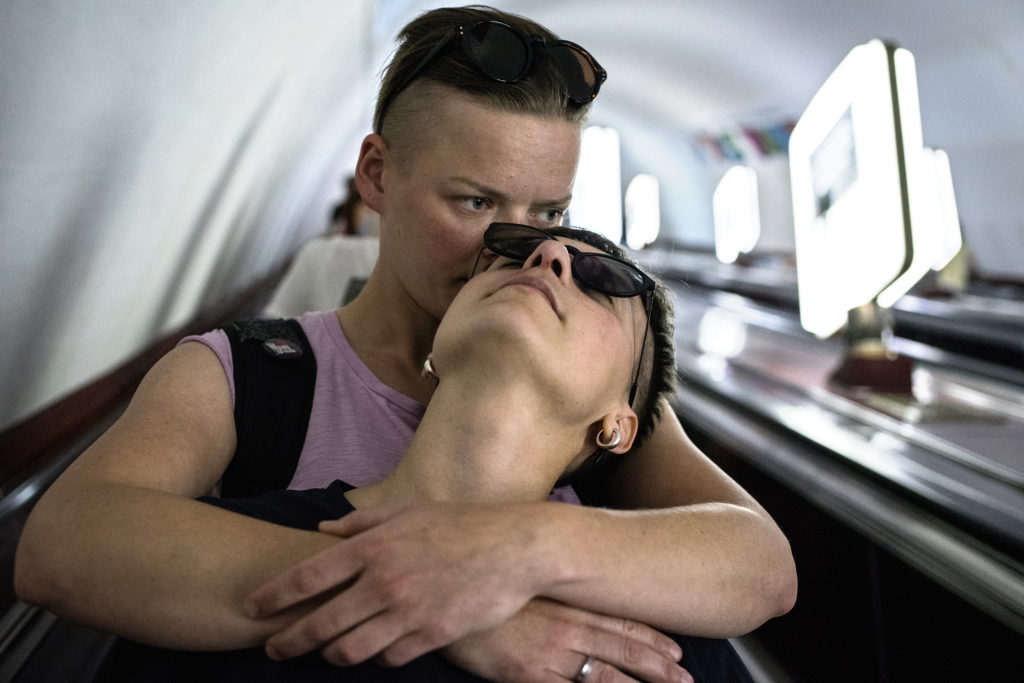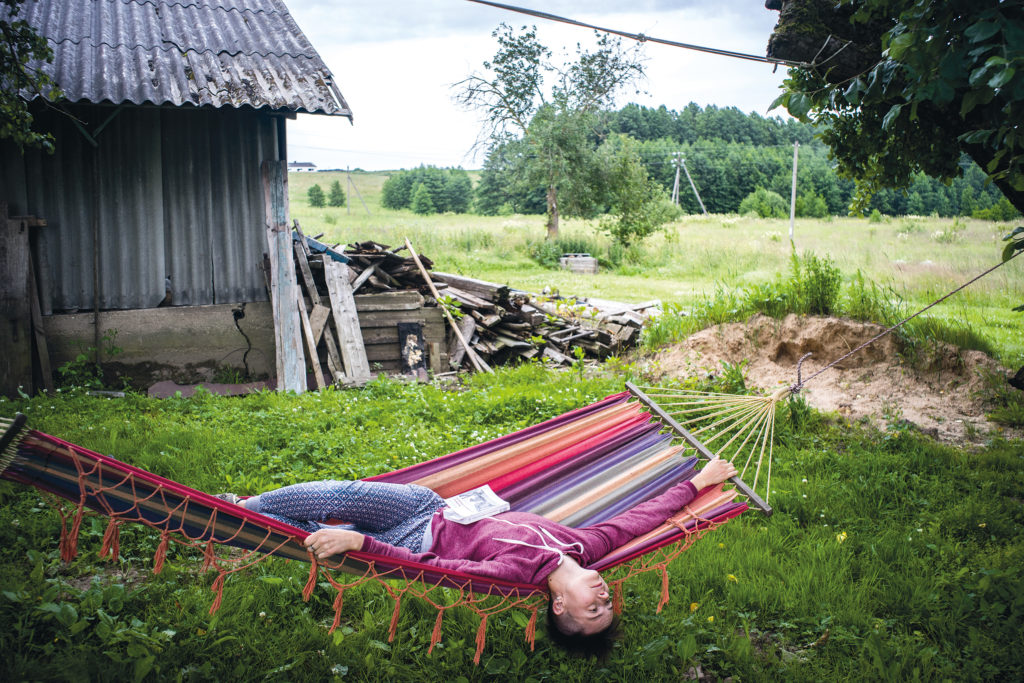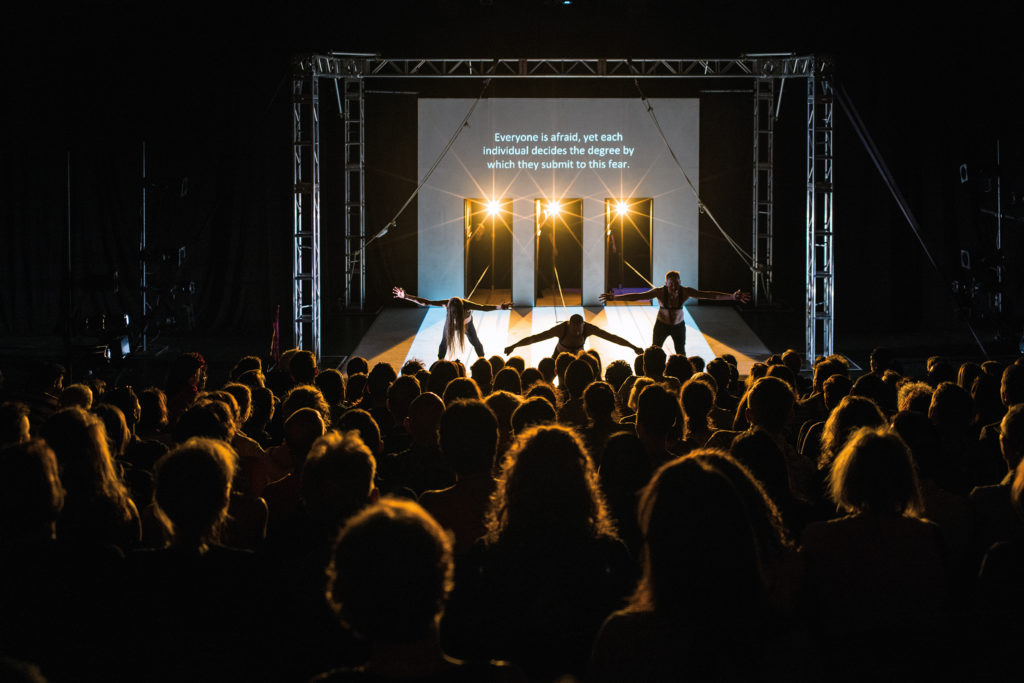Diverse Humanity is a series of photography books that tell about LGBTQ communities across the world with portraits of homo-, bi-, transsexual, and queer people portraits and reportages of their life, fragments of interviews with personal and broader stories in focus, as well as analytical articles by researchers with a wider focus on the societies they live in. Like many other incredible initiatives, the project was born out of informal conversations between philanthropist Jon Stryker and fine art photographer Jurek Wajdowicz who set themselves «аn ambitions goal to explore and illuminate the most intimate and personal dimensions of self, still too often treated as taboo: sexual orientation and gender identity and expression»1.
Since 2016, in collaboration with The New Press, 14 photobooks have been published analyzing the situation in the USA, Eastern Africa, Serbia, Latin America, Argentina, Poland, Japan, India, Russia, Mexico and Australia. In autumn 2020, a photobook about Belarus saw the light making its readers acquainted with a country where LGBTQ people have to «master the art of emotional camouflage”. The protagonists of Two Women in Their Time: The Belarus Free Theater and the Art of Resistance are a couple Svetlana Sugako and Nadezhda Brodskaya, actresses of the Belarus Free Theater which is banned in their country. Photographer Misha Friedman meets them in Minsk – “a city where nothing happens” and New York, where the young women have the opportunity to openly stage their performances, while journalist and writer Masha Gessen reflects on the nature, psychology and strategies of the (in)visible in the realities of the partisan culture in the capital of the country commonly described as “the last dictatorship of Europe”. The book reads like a full-fledged dialogue of two media – Masha’s text and Misha’s images.

The ability of (not) seeing is both a visual and a conceptual motive in “Two Women in Their Time”. The story appears to have been built according to this central principle and this is probably also the way the book should be read and viewed – by the way, as any other case of other “invisible” people living in Belarus, or anything else people got used to leaving unseen. Still this is a country of facades of impersonal clean streets and “wrong” backyards. Being invisible means being non-existent. Not even wrong (something one might fail to accept, understand, or start to question), but not physically perceived. Prefer not to see. Not interested to know. Not to be able to name. In the post-Soviet space, LGBTQ people are more than once defined in such ambiguous, self-censored ways as “well, how do you call them… well, you know!” By the way, the category of “otherness” of “these people” is quite broad – apart from LGBTQ, it includes, for example, people with special needs; in Belarus you might also come across men who consider a woman who has not given birth to be “non fully a human being”.

The category of (in)visibility is present in the book starting from its division into parts: the spreads with Misha Friedman’s photographs are accompanied by three subheadings featuring three sections/dimensions of the young women’s lives and all of them in their own way highlight the extent of their visibility: «What you see is nothing», «You see everything», «What do you see?»
In the first one, which refers to the “metaphysics of nothing” and evokes the memory “Myane nyama” [from the Belarussian “I Am Not”] by the renowned Belarusian philosopher Valentin Akudovich, documents the couple’s everyday life. If we omit the professional acting component (both in Masha’s text and Misha’s reportage, considerable attention is paid to the description of the theatrical performance with the participation of Sveta and Nadia take part in), it would be fair to say that virtually any LGBTQ couple in Belarus has a similar life style: constantly catching piercing gazes of tram passengers who accidentally notice an overly emotional hug of the girls or “more than a friendly” kiss, and feel free only when in their community bubble. Often secretly wanting to actually become invisible…
It would not be an exaggeration to assume that in a region that imposes an absurd wording of “traditional values”, every LGBTQ person has their own painful stories of reactions to their sexual orientation on the part of the significant others. For Sveta Sugako, it included first her mom’s tears and then a conciliatory borscht. For other LGBTQ people, the act of coming out of the closet may cost years of their parents’ offended silence and a categorical reluctance to “talk about it,” or a complete break with acquaintances who showed ostentatious concern about a potential answer to the child-rearing question. And how many more are still living in the closet, secretly envious of Elliot-Ellen Page’s or Jodie Foster’s courage…
In a country where, in the words of Masha Gessen, “on a street that’s not a street, in a building that’s not a building” there are “garage-theaters”, young women who rent an apartment together may well turn out to be a family with their own past and future. Minsk is a city with a palimpsest culture, as Tatiana Zamirovskaya subtly notes. A palimpsest-like chameleon.

“You see everything” is the second part of the photobook, which tells about the flipside of (not)visible Belarusians in the West. And again – with the Belarus Free Theatre performances during its overseas tour like a red thread of their life “scenery”, the backdrop against which we continue to observe the couple and their living of identity. “If making noise is the secret of survival in the West, lying low is the trick to staying alive in Minsk” Masha Gessen writes, and this phrase clearly reflects the contrast of the way these two realities are experienced by “these very” people inside and outside Belarus. The art of emotional camouflage ends triumphantly once you cross the border; Europe, North America, the world are about an opportunity to speak and act openly and on a completely different scale. In Masha’s text, in the description of this dimension of Sveta and Nadia’s professional life, the word “big” constantly pops up: premieres and theater productions mean bigger responsibilities, big efforts… big are also stages, audiences and theatrical companies themselves.
Greater visibility, however, as the photographs fully illustrate, does not bring greater stress. In a random shot made on a tourist boat filled with passengers, probably somewhere in Canada, we see the girls hugging each other with tenderness, Sveta’s hand rests on Nadia’s knee, while Nadia’s – on Sveta’s shoulder. Beyond the walls of the garage-country, it is not only the theater that feels more “free”…
And, finally, the third, final, section entitled “What do you see?” presents a sketch about attempts to overcome the opposition of (in)visibility, about steps towards a dialogue with Minskers through performances and street theater, which would not impose answers but ask questions instead. Attempts that are so far ending with the arrests of the actresses.
The last photo of the photobook shows a bend of an empty road, on both sides of which there is a twilight forest. If you continue moving forward along it, the forest might be left behind. A new day will come, with the sun illuminating what is still hiding in the shadows. And we’ll no longer need words to define one’s gender identity and sexual orientation. Not because there will be no LGBTQ people – I do want to believe there would simply be no people eager to put humans into the categories of “us” and “others”, “traditional” and “alternative”. After all, we have had a common denominator for a long time – we are all living beings.
All images are copyright of Misha Friedman from the book Two Women in Their Time: The Belarus Free Theatre and the Art of Resistance published by The New Press.
Friedman, M. & Gessen, M., 2020. In Two women in their time: the Belarus Free Theatre and the art of resistance. New York: The New Press. ↩